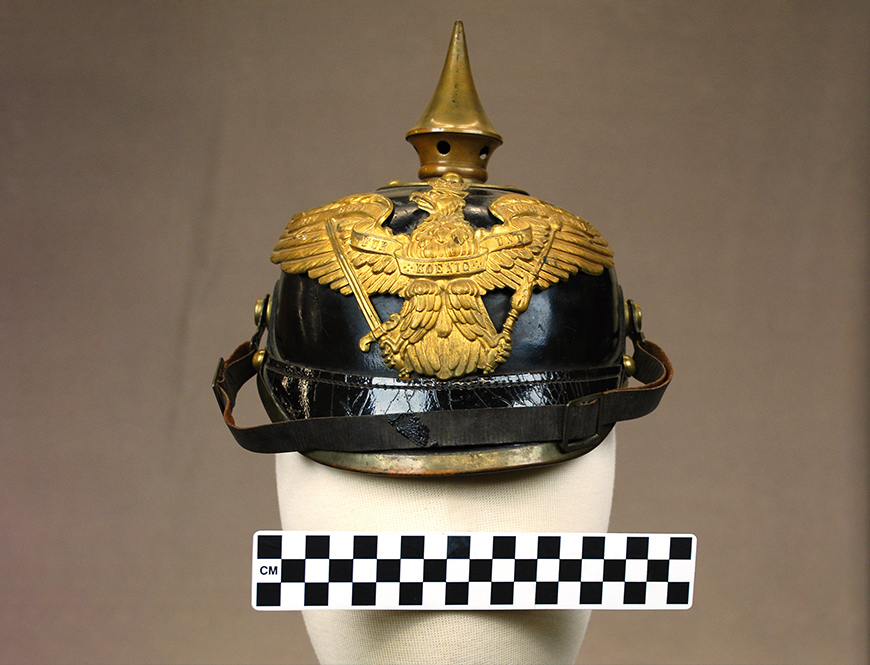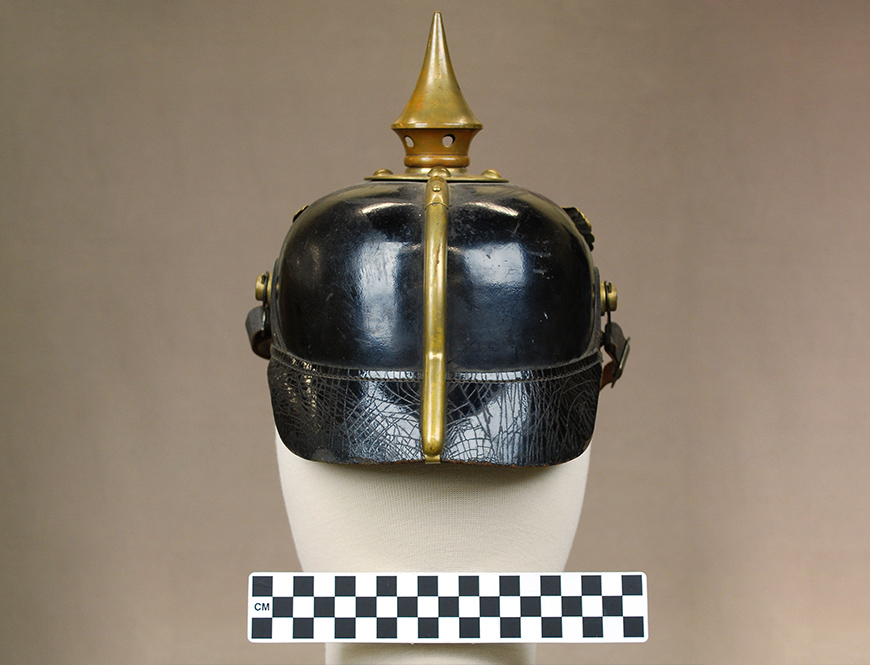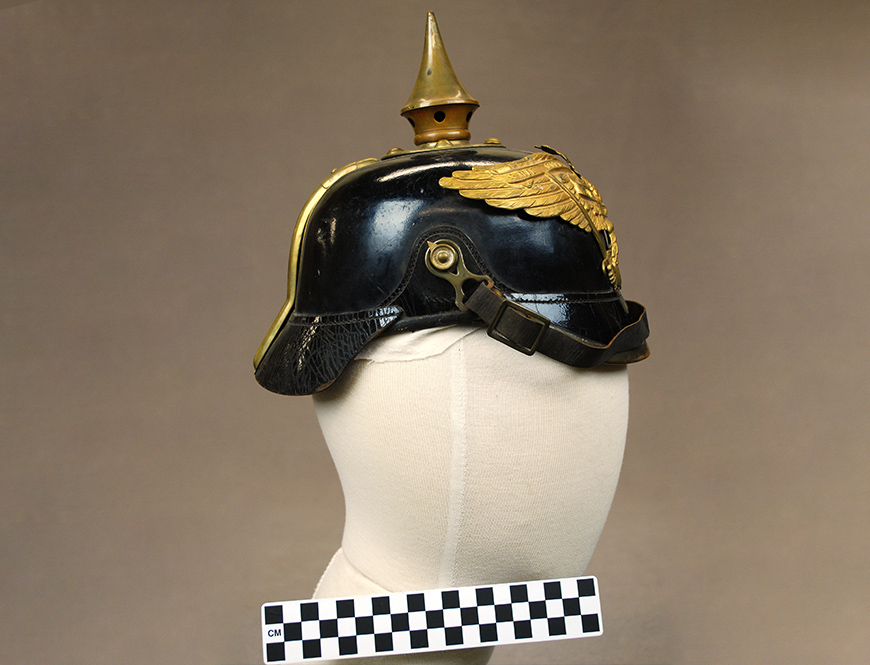This object is a helmet, specifically a pickelhaube, from 1904. This helmet is believed to have been worn by the 67th infantry regiment of the Prussian army signified by the eagle shaped plate (or wappen) on the front of the helmet.
The Prussian king Friedrich Wilhelm invented this style of helmet in 1842. The original design of the helmet was highly impractical for use when it was first designed – it was much too tall and unbalanced. Soldiers had problems with the helmet falling off and it being much too heavy for use during battle or even drills. In 1856 when King Wilhelm took over from his brother King Friedrich, adjustments were made the helmet so that it was more functional for military use. The height was lessened and the materials adjusted to the style that was kept by the military up until the end of World War I.
The helmet itself consisted of a leather shell with visors on both the front and rear, the latter being used for neck protection. Both visors had brass reinforcement on the trim to help the helmet and visors keep their shape. The leather was covered in a black lacquer that could be polished and kept shiny. Each regiment in the army would have its own wappen, or insignia, in brass or silver on the front of the helmet above the visor. The distinguishing feature of this style of helmet was the spike on the top of the helmet – it was immediately recognizable to everyone at the time as belonging to the the German military.
During World War I, the image of the pickelhaube was used as propaganda against the Germans, as it was something everyone understood to be distinct to German soldiers. There is an iconic image from World War I of a large gorilla wearing a pickelhaube and carrying a unconscious woman with the words “Destroy this Mad Brute” across the top. It was a propagandist poster to encourage people to enlist in the army. The pickelhaube was the most iconic part of the German uniform and was easily incorporated into the idea that Germans were brutes that needed to be stopped.
Propaganda against Germans spread quickly in America. Suspicion of anyone of German descent grew as the war went on and Americans began to become fearful of the thought of German spies living among them. Any German societies, newspapers, or services of any kind were shut down. There are even records of German-Americans getting lynched.
In 1916, the pickelhaube was replaced with the similarly iconic stahlhelm, or steel helmet, because the pickelhaube was not suitable for trench warfare; it was not durable and was very expensive to produce because of the British blockade of South America, where Germany imported the leather for the helmets. The stahlhelm was made out of a single sheet of steel – it was inexpensive, easy to produce, and provided much better protection for the soldiers in combat. The pickelhaube, however, remains one of the most recognizably German styles of World War I military dress.


